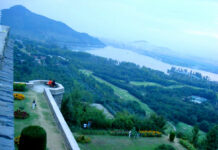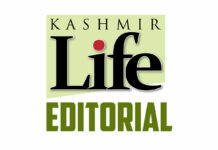Last week, the state police in Vaijaypur solved a mystery. A widow had made an application to police that her nine-year-old son had gone to gone to a local goldsmith to get something but never returned. The lady never came back to enquire about her application.
The police found some bones from a field in Vijaypur. When the bones were joineda skelton of a nine year old boy revealed itself. Inquest proceedings were launched. Even though DNA fingerprinting is yet to be done, on suspicion the police arrested the lady. The subsequent investigation found that the widow had married the goldsmith and the two are prime accused in the boy’s murder.
Law is clear and unambiguous on issues related to human beings, especially the dead. Once police find a dead body, it is supposed to investigate its identity. It is supposed to keep all the details recorded at the time of burial so that these can be used in future for identification.
The state police have not done something like this in last 20 years. They would take the corpses from the security agencies, treat them as foreign militants and have them buried by locals. It has resulted in dozens of such graveyards. While the SHRC’s police investigation wing has confirmed the existence of 38 such graveyards in the three districts form north Kashmir, there are similar cemeteries in south Kashmir, in Doda and too many in the twin border districts of Rajouri and Poonch.
When fake encounters became the norm and when nobody listens to the cries of thousands of families whose members were arrested and vanished in custody, all these graveyards are a liability on the conscience of a society. People may die or be killed as anonymous, but establishing their identity remains of paramount importance.
Authorities should have started the process as these killings were happening. Though the families having its members missing in custody have remained, perhaps the most visible and vocal lot of victims across Kashmir, for last 20 years, authorities have responded in silence. Courts have investigated cases, so have various branches of police and the civil administration – all have proved, and in most cases, identified the personnel behind the cases of enforced disappearances. But what has not happened is that there was no action, not even in one case.
The government has already remained silent for far too long, more than 20 years. Its routine response that the missing are actually in the training camps on the other side of the LoC could have been a convincing reply had not these unmarked graves of the unidentified existed across the length and breadth of Kashmir. The issue is gradually getting bigger and the concern over it is becoming international. It is high time efforts are made to establish the truth. Reconciliation can wait.









